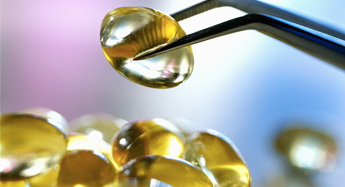Infringement of Swiss-form claims – the final word?
October 2016
The Court of Appeal has handed down the latest decision in the pregabalin action between Warner-Lambert Company LLC ("Warner-Lambert") and members of the Actavis group of companies ("Actavis")1.
The dispute relates to a second medical use patent2 for the use of pregabalin for the treatment of pain.
Actavis had launched a generic form of pregabalin (Lecaent) with a label covering only GAD and epilepsy (i.e. not pain). Warner-Lambert alleges infringement of the patent on both direct3 and indirect4 grounds. We have reported previously the earlier stages of this case, up to and including Mr Justice Arnold's first instance decision5, here.
The Court of Appeal dismissed the appeals of both parties, upholding the first instance decision that several of the claims of the patent in suit were invalid on the ground of insufficiency. None of the claims that had been asserted against Actavis were valid so no decision on infringement was needed. Nevertheless, Floyd LJ in the leading judgment took the opportunity to address obiter the concerns raised by Arnold J about the Court of Appeal's earlier judgment relating to infringement6.
Direct infringement
Floyd LJ reiterated the test he set out when these issues first appeared before the Court of Appeal (as we reported here). He again acknowledged that this issue presents a difficulty for the law in trying to ensure that that patentee is given appropriate protection for determining the new use for the drug, while at the same time not preventing a competing manufacturer from selling the drug for the known, un-protected use.
To determine whether the manufacturer of a generic product directly infringes a second medical use claim requires a two-stage analysis:
- Assessed objectively, should the manufacturer have known or foreseen the generic product ultimately as being or will be intentionally used to treat the patented indication?
- If so, has the manufacturer taken all reasonable steps in its power to prevent the generic product being intentionally used to treat the patented indication?
A second medical use claim will be infringed if the generic manufacturer foresaw or should have foreseen the ultimate intentional infringing use, and it is found to not have taken all reasonable steps in its power to prevent this.
How the courts will apply this test remains to be seen. In particular, the court's guidance will be needed to clarify both when the manufacturer ought to foresee infringement, and what steps taken by a manufacturer may constitute "all reasonable steps in its power". These questions are likely to have highly fact- and case-specific answers.
Floyd LJ also suggested that the courts will take a flexible approach to determining the appropriate remedies once a finding of infringement has been made, in an attempt to tailor the remedy to the individual facts of a case. How the courts approach this remains to be seen, but it seems clear that this will be crucial to striking a balance between rights-holders and competing generic manufacturers.
Indirect infringement
Noting Arnold J's difficulties with the Court of Appeal's earlier reasoning on the question of indirect infringement of a second medical use claim, Floyd LJ reiterated that he considers indirect infringement is possible in such cases.
Floyd LJ considered that the process of using an active compound for the preparation of a pharmaceutical composition for the treatment of the patented indication could still be incomplete when the active compound has been formulated into a pharmaceutical composition.
On this basis, it is important to consider whether any packaging steps or acts of a pharmacist would be relevant acts infringing the second medical use patent. If they would be, then a manufacturer could, subject to satisfaction of the knowledge requirement under s.60(2) PA 1977, indirectly infringe by supplying "means essential".
Next steps?
Pfizer has indicated that it intends to appeal to the Supreme Court (here) so this may not be the final word. However, as there are no remaining valid claims alleged to be infringed, the Supreme Court will need to take an appeal on validity if it wishes to consider the test for infringement.
If you have any questions on this article or would like to propose a subject to be addressed by Synapse please contact us.
1Warner-Lambert Company LLC v Actavis PTC ehf & Others [2016] EWCA Civ 1006.
2European Patent (UK) 0 934 061 B3.
3Section 60(1)(c) Patents Act 1977.
4Section 60(2) Patents Act 1977.
5Warner-Lambert Company LLC v Actavis PTC ehf & Others [2015] EWHC 2548 (Pat).


Michael Henley
Michael is an associate in the Patents department.
"Floyd LJ suggests the courts will take a flexible approach to determining the appropriate remedies once a finding of infringement has been made."

